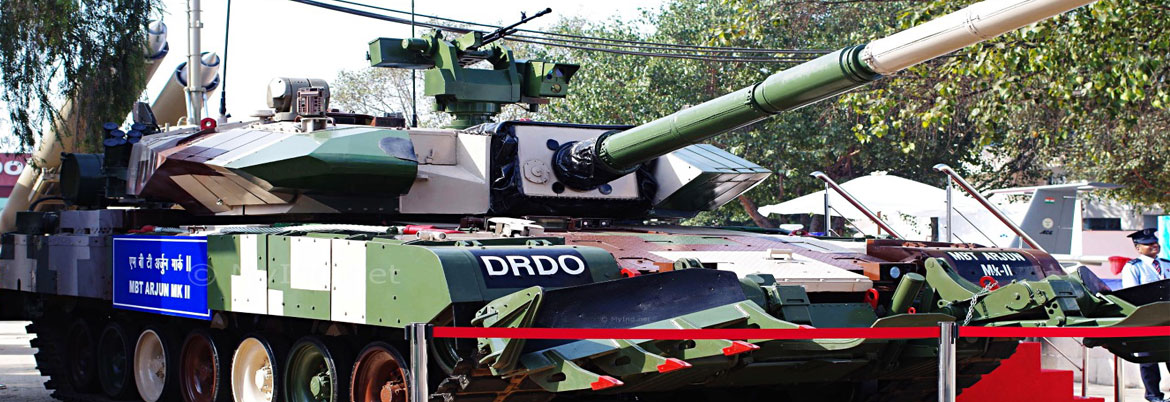Indian Army's Future Ready Combat Vehicle (FRCV) is Make The Best in India
- In Military & Strategic Affairs
- 09:02 PM, Jun 30, 2015
- Vijainder K Thakur
The Indian Army's recent RFI on the Future Ready Combat Vehicle (FRCV) has drawn flak from a section of the press. It's being alluded that the Army initiative is in contravention to the present government's Make-in-India policy and is anti national since it ignores DRDO capabilities.
(The author of this article broke the news on FRCV on June 13, 2015 and you can peruse some important details of the project here.)
Make in India
The Army needs a futuristic medium tank that can be deployed in all terrains, including the Tibetan plateau, the likely battleground for the next war that India is drawn into.
Most importantly, the Army wants to induct the tank by 2025-27 to replace the T-72 tanks of the Armored Corp, which would have outlived their design lives by then.
This tracked fighting vehicle would feature a modular design that will be leveraged to create a family of combat vehicles.
The Army doesn't care who designs the FRCV, who builds the prototypes, and who ultimately manufactures the family of vehicles. The Design Agency and Developing Agency (DA) could well be separate entities. The best design would be chosen and given to nominated DA(s) for production of the prototype(s). The selected prototype will be given to Production Agency(s) (PAs) for bulk production.
The Army will own the tank designs once they are submitted by the competing vendors, the Army will own the tank prototypes when they are made available for trials, and the army will own the IPR for the FRCV variants when they are under production at one or more PAs.
Time to pause and ask ourselves - Would the FRCV project be in contravention to the government's Make-in-India policy? Are the generals making a mockery of the nation's aspiration?
My take is - this is not Make-in-India! It is Make-the-best-in-India!
What the naysayers need to understand is that 'Make in India' does not mean
- Make with Indian technology only.
- Make with Indian bureaucratic managerial oversight only.
- Make with Indian PSU talent only.
DRDO Capabilities
The FRCV press criticism suggests that DRDO capabilities and potential are being ignored. Not true!
DRDO's past record with building tanks has been questionable. The Arjun MBT is too heavy and unreliable. Had it been reliable, it would have been useful in the Rajasthan desert. But there is another damper! Most analysts believe that the next war that India is drawn into would be fought in mountainous territory, not the desert!
Successive Indian Army leadership have resisted further induction of the Arjun. Because, it makes little sense for the Army to fritter its budget preparing for a desert war that will never occur, because rapid mobility of tanks could destabilize nuclear deterrence.
The Arjun Mk-2, with 93 upgrades, will reportedly be a much better tank than the Arjun Mk-1, but it will also be a much heavier tank at 66 tons, further anchoring it to the desert.
Let us be pragmatic. DRDO weapon system specs are mostly dictated by DRDO capabilities, not GSQRs. And this is acceptable in many cases. The Army has worked with the shortcomings of the INSAS rifle, for example. But, no one should even think of equipping the Indian Army with tanks that it cannot use!
DRDO's Future Main Battle Tank (FMBT)
DRDO's Future Main Battle Tank (FMBT) referred to in the press criticism is a concept, not an approved design! What the government has approved so far is for the DRDO to proactively develop enabling and critical advance technologies to reduce foreign dependence for all the future Armored Fighting Vehicles (AFVs). The government approval was given in 2012 and the technologies cleared for development are:
- Design and development of a tank engine and automatic transmission system.
- All electric drive for gun control system.
- Active protection system.
- Missile development.
In other words, DRDO has already been working for 3 years on systems that would go into the Army's FRCV project. That is a handsome lead over other vendors that should help DRDO grab the project! Provided it has been doing its homework and not squandering the funding.
Conclusion
The FRCV is out-of-the-box thinking that breaks away from past policies without compromising the nation's aspiration to produce most of its weapon systems within the country. Criticizing the FRCV project because it does not conform to the Defense Procurement Policy is petty pedantry.
The FRCV presents a challenge that should galvanize the DRDO and the private sector alike. The project would allow a private sector company to set up a joint venture with the Russian manufacturer of Armata MBT, Uralvagonzavod. Indeed, there are many similarities between Armata and what the Indian Army wants.
In many ways, the FRCV is the more pragmatic and timely parallel to the IAF's FGFA project. Imagine the Armata modular design powered by DRDO developed engine, transmission, active protection system and AD missiles tested and accepted for induction within 10 years - all manufactured in India! Do you share my dream?
By VK Thakur







Comments